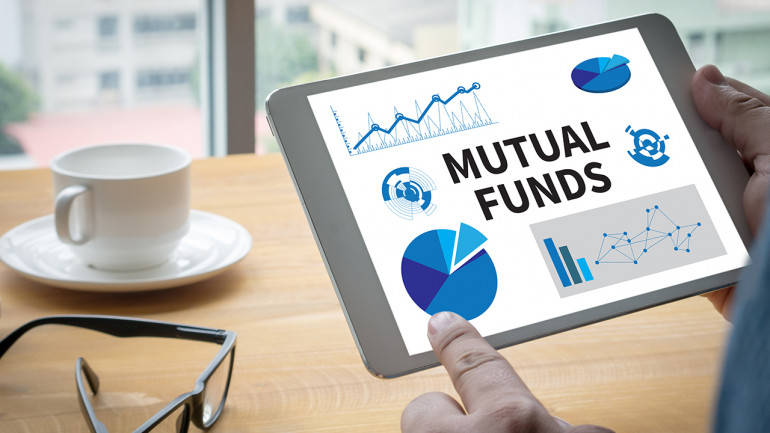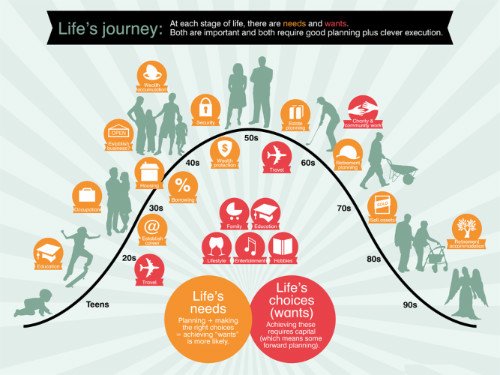我们继续接着上一篇的内容,在家庭年收入超过十万以上基本上就属于美国的中产阶级了。这个时候也有了余钱做一些资产配置和规划。
子女教育
这部分很简单:如果你想让你的子女在本科前上私立,想让你的子女上最好的本科,那么教育支出会非常高昂。随便比较一下中美两国就知道了:在中国,最优秀的几所大学的非特殊院系,每年的学费不到1000美金,四年下来只有3000多美金。同样级别的大学,在美国对应的数字是四年20-30万美金。正常美国人,起码会生2-3个孩子,可想而知压力是非常大的。
解决方法思路类似于401k:给你税收优惠,但只能用于教育,否则要罚款。各州政府都有类似的计划,由各个私营公司运营。关键词:529 plan;Coverdell。另外近几年来比较火的是用指数型万能寿险保单提早规划。
人寿保险
从美国最靠谱几大人寿保险公司(全美这样的公司不超过5家),搞一两个大额的permanent life insurance(即国内所谓“储蓄型保险”,不过概念不能够完全等同)。其与term life的区别是:
1) Term life: 纯粹的兜底工具,每月的保金直接对应精算层面上的意外死亡概率,于是在年轻的时候非常便宜(20-30刀/月,对应100万刀的保金),没有“投资”的部分,于是如果意外始终没有发生(希望如此),所有交过的保金,都仅是费用。仅适用于20-40多岁的“年轻人”,因为再往后,保费会贵到你无法承担。(这很好理解:一个100岁的老人,如果上100万的寿险,他当年的合理保费是多少?答案是99.9…万)
2) permanent life: 100万的保额对应的保费不是$20-30每月,而是大概$400-500/月。但这$400-500之中,也确实仅有$20-30是纯粹对应精算层面上的意外死亡概率,而剩下的部分,都进入到了该保险公司一个大到大几百亿至几千亿美金的资金池里,进行险资的投资管理。其逻辑在于,随着你在这个险资池里的份额越来越多,你100万的保金,越来越大的部分,是由你自己在险资池里的储蓄和投资收益来自我保证的,从而你支付的纯粹对应精算层面的意外死亡概率的纯费用部分,会越来越低。于是,哪怕你的保单持有到了很大年纪(通常会被持有至自然离世),这部分纯费用也依然能维持在很低的层面,且会越来越低,而不会像term life一样,到了40-50岁,就贵到你负担不起。
与此同时,你的份额在险资池中增长的同时,精算师会给你一个称为“现金价值”的数字。这个数字,你可以大体上认为类似于你401k中的资产:持有期间不用交资本利得税,而59岁半之前不能取出来(但可以以此金额为抵押物去做用途不限的贷款)
对应理财/投资的“五个指标”,其与典型的mutual fund的区别如下:
1) permanent life(终身寿险):险资池大到几千亿刀,其投资标的遍及你能想到的全球所有投资品(整个账户都是SEC exempted,爱干啥干啥),甚至是整个公司。最优秀的公司的收益率能到8%左右,且险资池风险能控制到美国国债的水平。这8%的收益率只有你死后(意外或老死),由你的家族享受。你自己生前能享受的部分只有精算师给你的4%-5%的“现金价值”部分(这部分的风险,类似于checking account)。持有期间不交资本利得税,59岁半之前变现受限制。放在信托里,死后的保金不是遗产的一部分,不交遗产税。
2) mutual fund(共同基金):单个fund大点儿的几十亿刀,其投资标的有明确的限制(股票/债券,不以投机为目的的衍生品)。最优秀的公司的典型收益率能到6%-7%,对应风险…不大不小。几乎可随时变现,但每年都需要交资本利得税。死后的账面余额算作遗产的一部分,计算遗产税。
于是,在美国,permanent life insurance主要就是三个功能:1,如同term life,年轻时对冲意外挂掉的风险;2,利用“现金价值”做临时资金融通和退休金补充,类似一个几乎零风险,但收益被限制在5%的401k;3,遗产规划:免税留给后代/家族一大笔钱。
Permanent life insurance绝对是个好东西,但在美国,依然是个大坑,主要原因是公司和从业人员素质太参差不齐(貌似情况与国内类似)。
终生寿险和共同基金是彻底不同的两种“生物”,满足的也完全是不同的财务需求。投资共同基金是为了在更高风险下追求高收益和高流动性,perm life却是为了在低流动性下保证高收益和几乎无风险。终生寿险的最大的优势是能让你的资金进入几千亿的险金池中运作,已达到甚至5以上的夏普比率;而不是如共同基金一般,让你的资金进入顶多几十亿规模的投资池,来维持最高1.X的夏普比率。

金融市场投资
各种金融市场投资。这里指的是没有任何税收安排和流动性限制的金融投资,如自己炒股、投资mutual fund,通过money manager开设管理investment account等等。有关自己炒股,个人态度始终是不建议几乎所有的中产阶级碰个股,除非你仅是炒着玩儿而已,或者你自己真的有大型银行或美国各大买手们的研究和交易权限。
有关炒股,有两套很经典的说法:
1),S&P 500在近20多年里的平均回报是8%多一点点,但波动如过山车一般。而在这漫长的5000个交易日里,去掉其中最好的20个交易日,这个数字就变成4%左右了;再去掉20个,就是2%不到了;再去掉20个,直接变负数。
2),我们听到了太多的“一年翻几倍”的例子,但首先,那些更多的“一年亏到底”的人,是不会四处宣扬的,于是市面上只有“一年翻几番”的传奇故事;其次,机构完全能做到高杠杆下几天就翻N倍,但是没有用。美国最激进的大机构,也无法保证高于10%的风险可控trading回报。而如果一个人真的能保证,不用“一年翻几倍”,而仅是“每年增长20%以上”,那么他就是巴菲特,伯克希尔哈撒韦很快就能是他的了 — 要知道,巴菲特可不只是玩儿股票债券,人家可是动不动就买下整个一个公司作为子公司来玩儿的。
关于基金和共同基金
有关mutual fund,没什么太多可说的,全美靠谱的公司也就那么10来家左右。随便找一家,做个风险测试,把钱放里面就是了。这适合闲散资金量在几万刀至几十万刀级别的投资。通常有front-load fee或back-load fee,视风格而定,有高有低。
而具体的fund选择,没有“最好”,只有“更适合”。好比说,如果你的资金量就几万刀,喜欢高收益,同时对高风险引起的低流动性(好比,不急着用钱,于是这两年大盘跌得很惨,你也不在乎,因为过几年总能涨回来)表示不以为然的话,那么直接找最大的那三家fund,随便搞个大盘ETF就挺好。而如果你对风险极其敏感,或者,对流动性要求很高,那自然就不能持有重股票的大盘ETF裸奔。总之,这件事没有标准答案,而永远是一个收益、风险、流动性的个人喜好均衡。
但在单一fund级别,个人确实也如不少朋友一般,更认可Bogle的那套理念:通过high trading来试图进行fund内部个股/个债(而不是asset classes)的重新平衡,哪怕模型正确,friction也会把并不能保证的收益或风险的好处统统淹没。如果想降低一个被动fund的风险,少股多债就是了。
如果共同基金已经满足不了你
如果可投资资产达到了几十万刀,上不封顶,单一mutual fund对应的风险就无从对冲了,就可以考虑找一个美国大买方或者卖方下的wealth management(或private bank)开设一个discretionary investment account。设定好你的风险喜好和收益期待,然后就不用管了。在这一层面,money manager(其实是一个超级大团队)会一低频做rebalance,但这种rebalance就已经不是个股/个债层面的事情了,而是在以下的四个层面上:1,行业;2,资产类别;3,基金公司;4,全美最优秀的基金经理。
背后的逻辑,其实异常简单:一个行业/资产类别/优秀的基金经理,如果超平均表现了几年,就应该“卖掉”它们了,而转配给那些连续低于平均表现好几年的行业/资产类别/优秀的基金经理。(其中,“基金经理”略微妙,因为一个基金经理如果连续几年表现糟糕,有可能并不是TA的正常波动,而是TA发生了一些人生/心情变故 )
这些investment account的“坏处”在于每年的管理费,好处在于这些大机构会利用自己的购买力去给你配置你个人根本拿不到的投资品,如首发的municipal bond,甚至是66刀一股的阿里巴巴,或者以更低的front load fee去给你组mutual fund的portfolio。总之,只要资金量足够,你能得到的好处比那点儿管理费多得多。(好处往往并不是从“更高的收益”一侧反映的,而更多的是从“更低的风险”来体现。)
这里,买方和卖方的区别,如果有的话,可以简单粗暴总结为,卖方(Wall Street)会更激进一些,fee也有可能略高,更适合“近期需要抓高增长然后变现”的目的。同时,最大的几个卖方的入门门槛可能更高,如一千万美金;买方会相对保守一些,fee也有可能略低,入门门槛也基本是几十万起也OK,更适合“把钱放那儿就懒得管了”的目的。
总之,但凡涉及“投资”,比“收益”本身更重要的事情,永远是“风险”。于是,建议在看收益之前,起码要了解一下其对应的“单位风险收益”。
一个典型的例子,即国内这些年风起云涌的所谓“P2P”。在当下银行利率非市场化的大环境下,银行只给不需要贷款的企业放贷款的大环境下,其存在或许有些许合理性。但是,投资者要非常清楚地明白这样一个事实:你清楚地知道SP500的长期回报是8%-10%,同时你也能清楚地知道这对应的标准差是“百分之十几”,于是,你可以做出符合你喜好的理性选择 — 在承担清楚的风险的同时,享受对应的收益;但对于P2P这种东西,你只知道一个对你并不透明的“利益链条”人为给你的收益是好比10%,但你根本无法了解其背后对应的风险是什么级别 — 没人知道,因为没有数据,更没有统计。于是,不管你的决策是如何的,投资结果是如何的,其性质都是“感性”的,即,这是在赌博而已。

财富传承
如果已经是“小富”了,或预计会留下很大一笔征税遗产(好比有大概上千万刀以上的资产),可以尽早设立不可撤销信托(trust)来规避遗产税。
个人觉得,如果人在美国,个人/家庭收入已经在100k-200k甚至更高的级别了,除了以上提到的一些必要的内容(各项保险,养老,子女教育)之外,相比于成天琢磨着怎么省下更多钱来做投资,更好的理财方式其实是“享受生活”。喜欢大房子,那就买个大房子;喜欢好车,10万美金就能全款买一辆BMW M6或Nissan GTR R36;喜欢出海钓鱼晒太阳,10万刀也能弄个还不错的小游艇;喜欢高尔夫,全国打到吐血;再有就是全球各处旅游种种。毕竟两国发展阶段不一样,而最大的区别并不在于“维持生计”层面,而是在于“小富”之后的生活质量:国内诸多概念上“巨富”才能进行的奢侈娱乐活动,在美国,“上层中产阶级”和“小富”们就可以以白菜价来更高质量地体会了,何乐而不为?很多时候真的需要去静下来想一想:活着究竟是为了什么?
说到这儿,可能有些人已经坐不住了:房产投资你打算什么时候说啊?!
OK,这就说。
我并不明白为何我国同胞是如此热爱房产。是因为“看得见摸得着”的砖头情结?还是因为小农意识的传承?还是仅是把我国前十多年的一线城市房地产经验不加甄别地就复制到了美国?
简单说吧:在美国,民用房地产(而不是商业地产)的综合价值增长率,几乎跟平均通货膨胀差不多,即2.5%-3%。而对应S&P500,这个数字是8%。民用房地产的波动,一点儿也不比股市大盘小;且波动周期可能要长得多,即你若处于谷底,可能很多年都无法涨回来;持有成本很高 — 房产税;你作为个人,并无法投资美国房地产“大盘”,而仅能够购买一至几处房产,其个体对应的风险比大盘更大。
这相当于什么?相当于你把大量的资金(几十万至上百万),冻结在了一个“个股”上(单一房产,流动性很差),仅享受了通货膨胀率一般的收益,还要承担一点儿也不低的风险,以及永远跑不了的摩擦(房产税)。这是图什么?
有些人说了,加州某些地方的房子在疯涨。嗯,是,疯涨,但这就跟你买了一块玉一样:市场在疯涨,是因为有人追捧;但只有你卖出去,收益才能实现。但你若觉得还有疯涨空间,怎么可能舍得卖?于是你动了卖的心思,自然就是觉得疯涨得过头了。而如果你这么觉得,很可能大家早就这么觉得了,于是大家都想卖。大家都想卖,谁又来买呢?没人买,都想卖,结果可想而知。
更“可笑”的是,房地产对应的所谓“疯涨”,才是个什么级别?一年翻一倍,人们就激动得不得了了。可在美国金融市场上,找一个几天翻一倍的个股,分分钟的事儿。你既然如此喜欢“疯涨”的感觉,为何不玩儿得彻底点儿,直接去炒个股呢?个股流动性还高呢。
还有些人说,投资房产是为了出租,算上租金,收益还是不错的。首先,你要能租出去;其次,你要不怕那个麻烦,除非你花10%-15%的代价去雇物业替你管理;最后,美国常年租售比平均在20倍至50倍左右,对应的无摩擦回报也就2%-5%,算上value上涨,综合也就5%-8%。然后扣了房产税,扣了修修补补或物业管理费,扣了空租,就算不考虑你房产value本身的巨大不确定性,还剩下多少了?
结论
在美国,房产投资仅对两类人有意义:
1,真正搞商业房地产投资开发和运营的投资方;
2,巨富。除此之外,对于中产阶级,房产就是妥妥的消费品。即,你想要提升生活质量,才应该考虑去买一个更好的房子,或买几处房子。而如果仅是想要投资,请牢记:
美国是一个建立在金融市场上的国家。
于是,哪怕你就是对投资房地产感兴趣,也应该去选择放一部分资金在REIT里(Real Estate Investment Trust),而不是自己赌着身家去趟浑水。
事实上,美国政府始终都在用你能想到的各种工具,限制人们把大量资产冻结在房地产这个蓄水池里。而作为一个发达的经济体,更是在全力避免大批民众可以通过收租金来过上理想的生活。(美国政府的画外音:别赖在家里,都给老子工作去!创新去!实现美国梦去!)。这背后的原因也很简单:一个发达的经济体,特别是美国这个可以全球印钱的经济体,最担心不是通货膨胀,而是资金运转不良,民众统统躺在old money上过没有追求的日子,以及结构性丧失社会阶层流动性。
综上所述,总结
1,下层中产阶级:用各种保险来“兜底”/ 401k-403b-IRA/ 员工股票-期权购买/ 开始为子女教育存钱/ 买个不错的房子。
2,上层中产阶级/小富:用各种保险来“兜底”/ 升级医保/ 401k-403b-IRA放满/ 员工股票-期权购买/ 子女教育基金/ 买个很棒的房子/ mutual fund/ permanent life insurance/ wealth management – investment account/ 多花钱来享受生活/ 投资个业余的小生意。
3,“富豪”:各种全方位的全面保险/ permanent life insurance/ wealth management – investment account/ 不可撤销信托/ taxation planning/ 实业和商业地产投资/ 子女教育投资/ 各种花钱来享受生活/ 政治献金/ 慈善。
本文非原创,经本站仔细编辑整理后发布,不构成投资建议。




